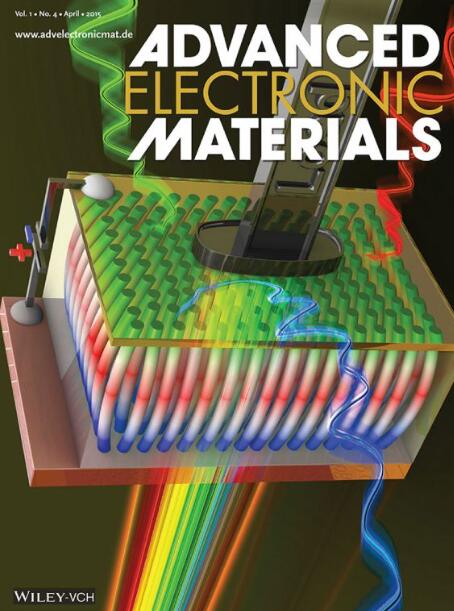高品质面内铁电外延五层Aurivillius薄膜用于电热冷却
IF 5.3
2区 材料科学
Q2 MATERIALS SCIENCE, MULTIDISCIPLINARY
引用次数: 0
摘要
采用脉冲激光沉积技术,在SrTiO3衬底上生长出了具有n = 5 (Sr,Bi)TiO3钙钛矿样层的Aurivillius相Sr2Bi4Ti5O18高质量纯c轴取向外延薄膜。在最佳沉积温度为650°C时,以20 wt.%的铋过量为目标获得了最高的结晶质量,并且在理想值n = 5附近获得了平均堆叠顺序值。扫描透射电子显微镜显示,在n = 5的平均厚度附近,n为4 ~ 6的区域与x射线衍射分析一致。指间电极用于探测面内极化和测量电热学性质。在≈135℃时,当电场为150 kV cm−1时,最大绝热温度变化为ΔT ~ 0.95℃。在铁电居里温度(TC)附近的较高温度下,预计会有更大的数值。由于Sr2Bi4Ti5O18的TC可以通过共掺杂来调节,这一发现为在环境温度下产生大的电热效应铺平了道路。本文章由计算机程序翻译,如有差异,请以英文原文为准。

High-Quality Epitaxial Five-Layer Aurivillius Films with In-Plane Ferroelectricity for Electrocaloric Cooling
High-quality purely c-axis oriented epitaxial thin films of the Aurivillius phase Sr2Bi4Ti5O18 with n = 5 (Sr,Bi)TiO3 perovskite-like layers, are grown on SrTiO3 substrates by pulsed laser deposition. The highest crystalline quality is obtained with a 20 wt.% Bi-excess target and average stacking order values in the proximity of the ideal value n = 5 are attained for an optimum deposition temperature of 650 °C. Scanning transmission electron microscopy reveals regions with n ranging from 4 to 6 around an average thickness of n = 5, in agreement with the X-ray diffraction analysis. Interdigital electrodes are used to probe the in-plane polarization and survey the electrocaloric properties. A maximum adiabatic temperature change of ΔT ∼ 0.95 °C for an electric field of 150 kV cm−1 is observed at ≈135 °C. Larger values are expected at higher temperatures around the ferroelectric Curie temperature, TC. Since TC of Sr2Bi4Ti5O18 can be tuned by codoping, the findings pave the way toward a large electrocaloric effect at ambient temperature.
求助全文
通过发布文献求助,成功后即可免费获取论文全文。
去求助
来源期刊

Advanced Electronic Materials
NANOSCIENCE & NANOTECHNOLOGYMATERIALS SCIE-MATERIALS SCIENCE, MULTIDISCIPLINARY
CiteScore
11.00
自引率
3.20%
发文量
433
期刊介绍:
Advanced Electronic Materials is an interdisciplinary forum for peer-reviewed, high-quality, high-impact research in the fields of materials science, physics, and engineering of electronic and magnetic materials. It includes research on physics and physical properties of electronic and magnetic materials, spintronics, electronics, device physics and engineering, micro- and nano-electromechanical systems, and organic electronics, in addition to fundamental research.
 求助内容:
求助内容: 应助结果提醒方式:
应助结果提醒方式:


